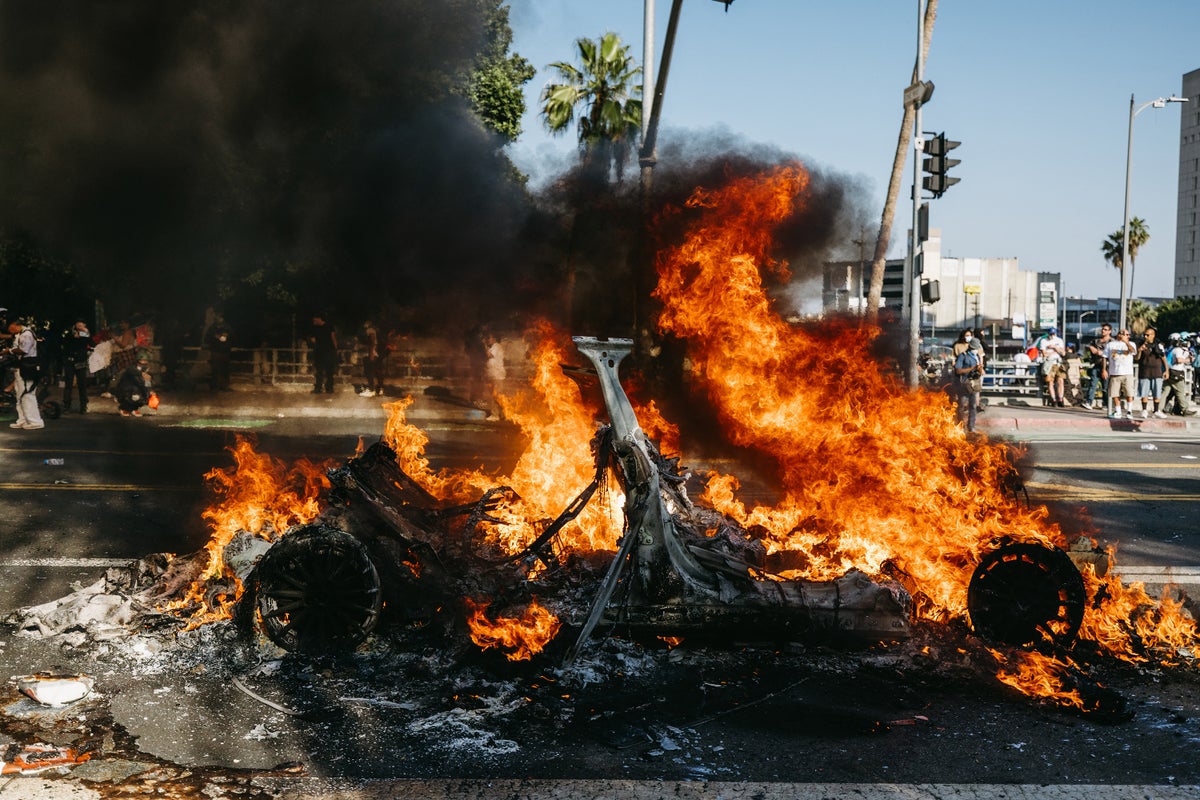
"Each I-Pace can carry roughly 90 kilowatt-hours of stored chemical energy, comparable to about 170 pounds (77 kilograms) of TNT. That energy is distributed across hundreds of lithium-ion pouch cells."
"When any one cell is punctured or overheated—or set aflame with an incendiary device—chemical reactions generate more heat than the cell can shed, and neighboring cells follow in a chain reaction."
"According to a 2024 study in the Journal of Power Sources, as the battery burns, its temperature can soar past 1,000 degrees Celsius. At that point, the pack becomes its own furnace."
"On supporting science journalism If you're enjoying this article, consider subscribing."
In Los Angeles, a protest led to the destruction of at least five Waymo-branded Jaguar I-Pace robotaxis, which were set ablaze by demonstrators. The fire resulted in the complete obliteration of the vehicles, primarily due to the thermal runaway phenomenon linked to the lithium-ion batteries they use. Each I-Pace houses considerable energy that, if ignited, triggers a chain reaction capable of producing excessive heat, effectively turning the battery into a furnace and consuming nearly all vehicle materials in the process.
Read at www.scientificamerican.com
Unable to calculate read time
Collection
[
|
...
]